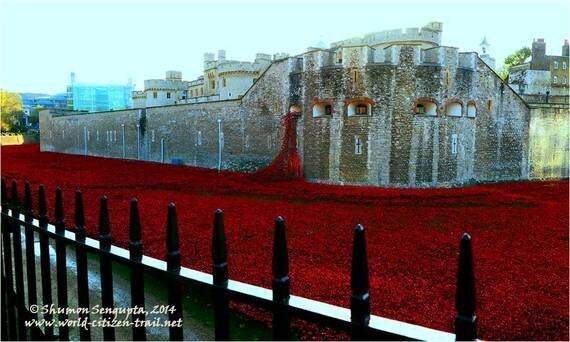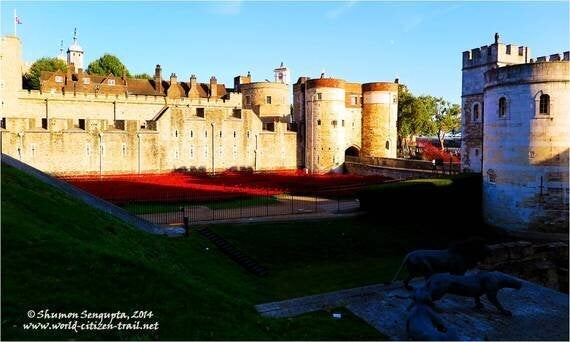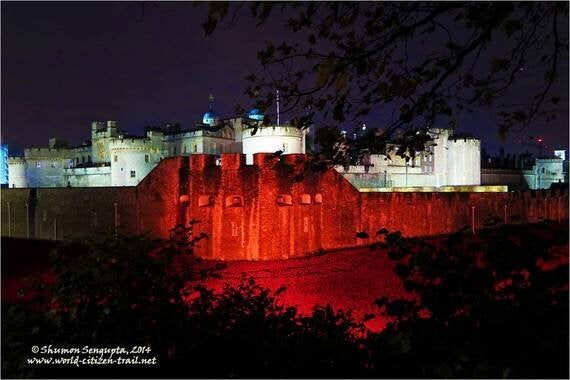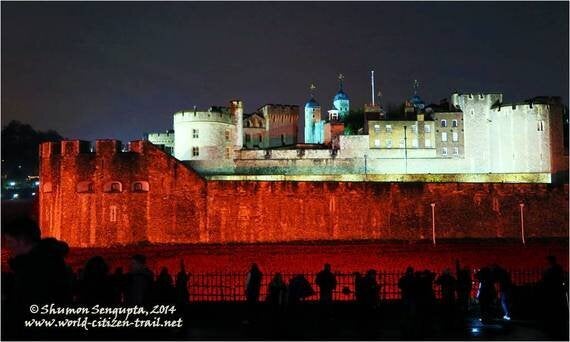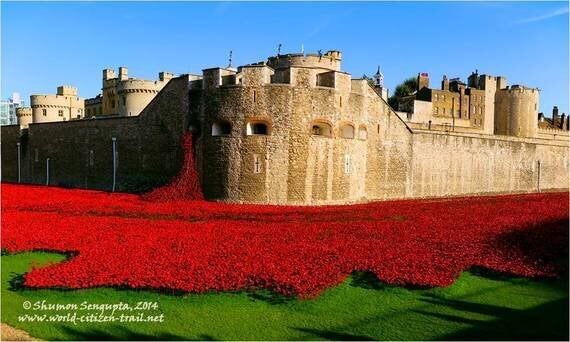
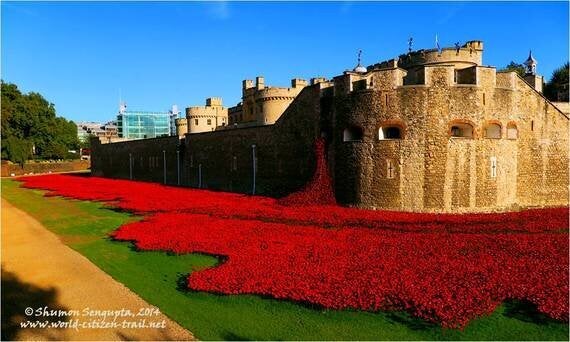
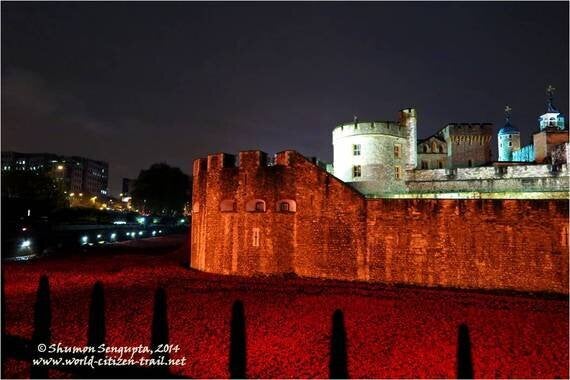
The ambitious artistic installation entitled 'Blood Swept Land and Seas of Red' at the Tower of London's dry moat has captured popular imagination and taken a nation by a storm. However, notwithstanding its immense popularity, this art installation has faced criticism from a few quarters. The critics, I think, have some important points to make that are worth taking note of.
More about that a little later, first about the installation itself.
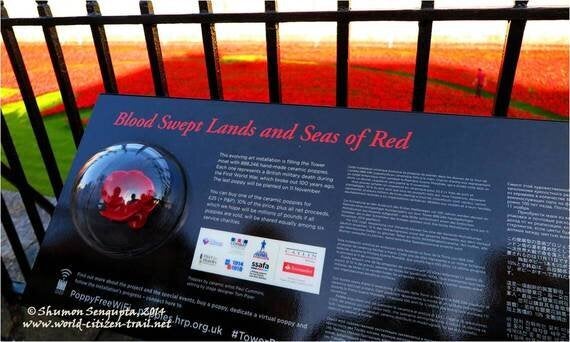
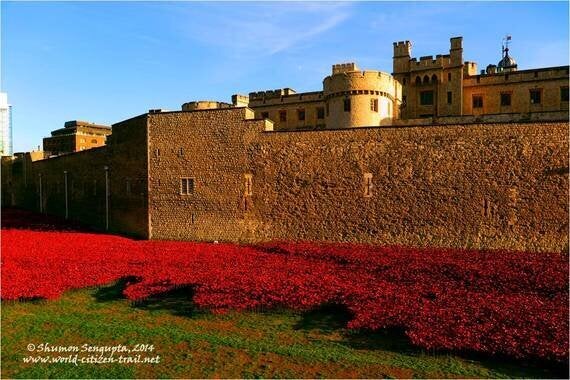
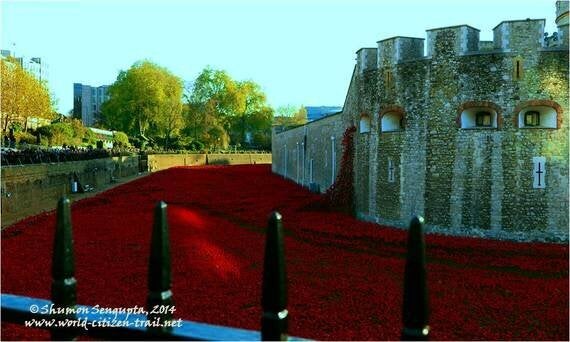
Between 5th August and 11th November 2014, the wide green expanse of the dry moat was filled with 888,246 scarlet ceramic poppies, in the memory of as many soldiers from the British Commonwealth who fell in World War 1. On the First World War Centenary this year, four million visitors are estimated will have seen this installation.
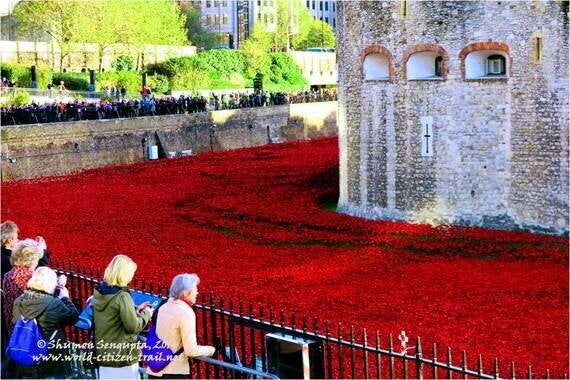
The idea of the installation at the Tower of London was conceived by British Ceramic Artist Paul Cummins, in collaboration with Stage Designer Tom Piper and executed with the help of over 8,000 volunteers. The title of this ambitious work's is taken from the first line of a poem by an unknown World War 1 soldier; the poem beginning with the line: "The blood swept lands and seas of red, / Where angels dare to tread."
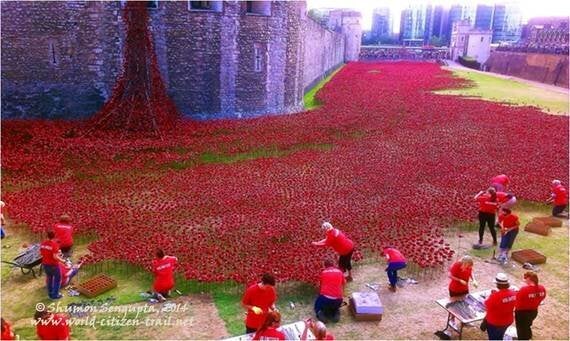
Growing up in India, I have always been intrigued by the connection between the red Poppy and the tragedy of war and it is only recently that I understood the link, which I learnt, goes back to the Napoleonic wars of the 19th century.
Wild Poppy seeds can remain potent, buried in the soil for 80 years or more before they germinate. Germination is generally triggered when the soil is disturbed or churned, which brings the seeds lying dormant deeper in the soil, to the surface.
During the Napoleonic wars, battlefields were trampled and bombarded, which churned up the fields into large expanses of mud, while leaving behind lands strewn with bodies of fallen soldiers. The soil in the desolate battlefields also became saturated with lime from the rubble, which added to create ideal conditions for the germination of poppy seeds. As a result, poppies grew in such profusion that they turned the battlefields into vast expanses swathed in red.
Fast forward to First World War. The spring of 1915 was a warm one after a frigid, cold winter. In the region around Ypres in Belgian Flanders, blood red poppies had started blooming in profusion in and around the battlefields, in the months of April and May.
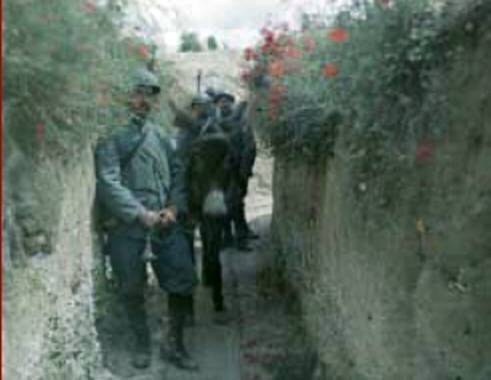
(French trench with a donkey and poppies; this is the only color picture known to show poppies on the battlefield. The photograph was taken in 1915 by an official French war photographer. Photo courtesy of Rob Ruggenberg / The Heritage of the Great War. Source: http://www.flandersfieldsmusic.com/ww1-photos.html)
The contrast between bloodshed and the sudden profusion of delicate blood-red poppies which followed on the remnants of death, destruction and loss was as stark and severe, as it was poignant and beautiful - it was as if Mother Nature was healing a shattered barren land.
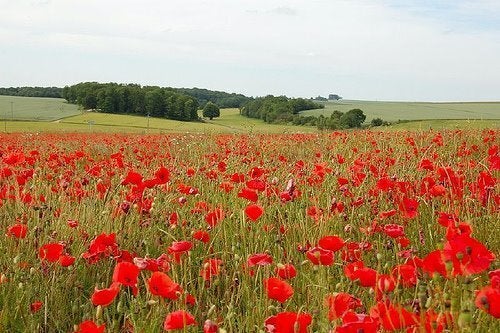
(Flanders Fields, Source: Internet)

(Flanders Fields, Source: Internet)
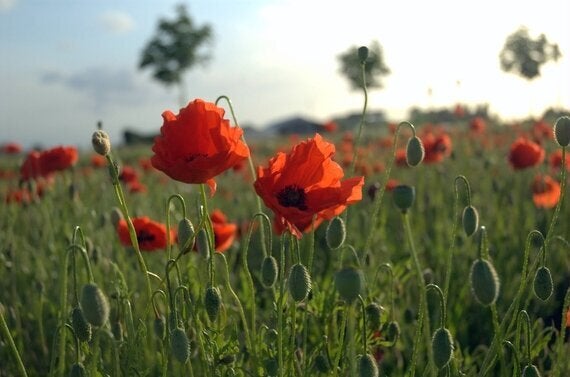
(Flanders Fields, Source: Internet)
Serving in the First World War, moved by the blooming poppies, Canadian volunteer medical officer Lieutenant Colonel John McCrae, in an outpouring of grief, wrote the poignant poem 'In Flanders Fields'. Earlier, he had buried his friend, a young Canadian artillery officer, Lieutenant Alexis Helmer, who was killed in the battlefield.
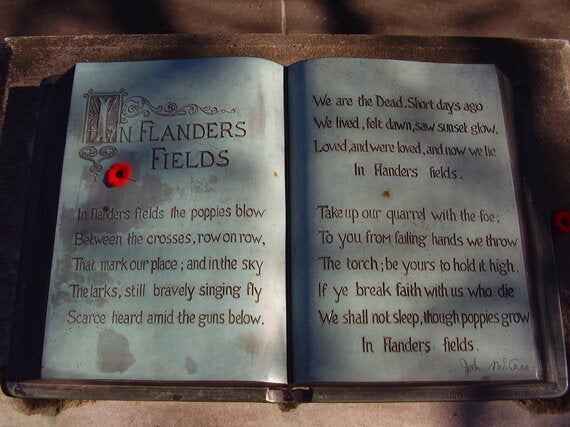
(Source: Internet)
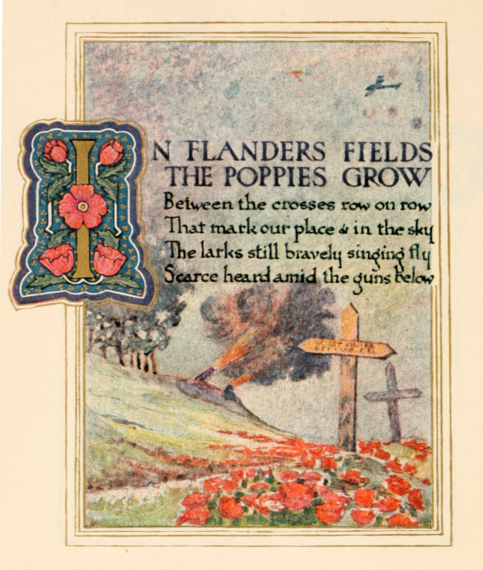
(Source: Internet)
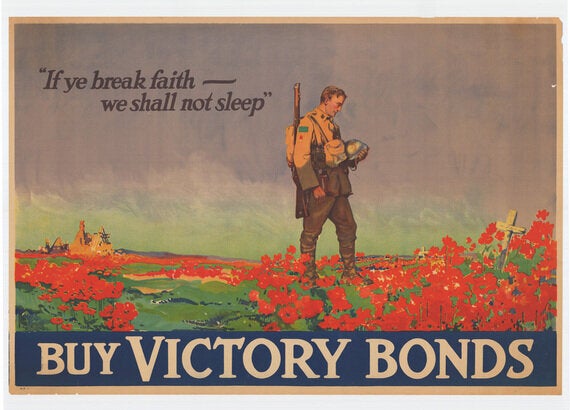
(The Canadian War Department used McCrae's poem to get war loans. The painting was made by Frank Lucien Nicolet. Source: http://www.flandersfieldsmusic.com/ww1-photos.html)
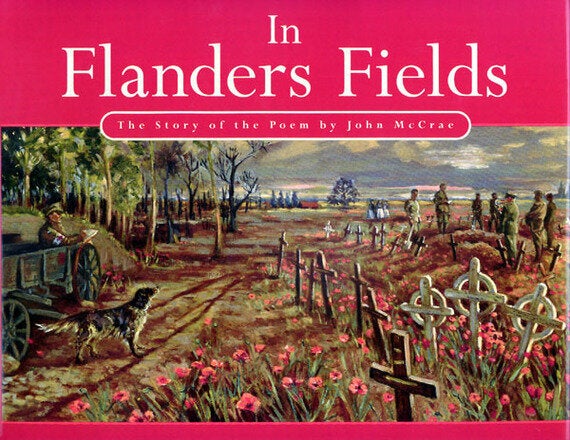
Since then, the red field Poppy has become synonymous with the battlefield and remembrance of fallen soldiers.
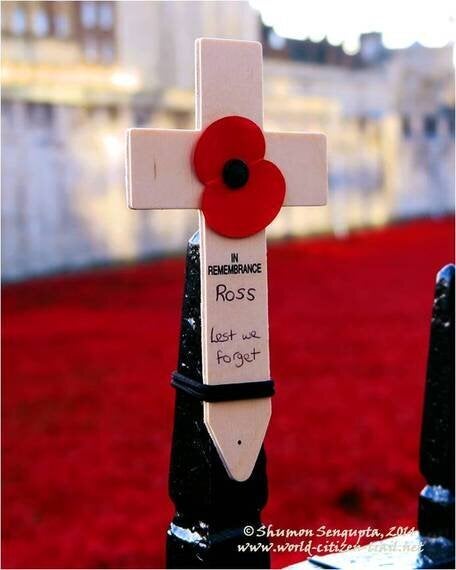
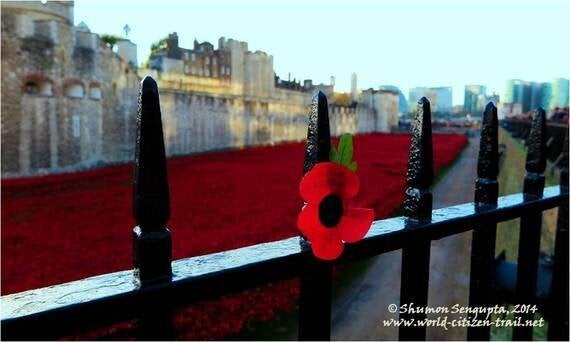
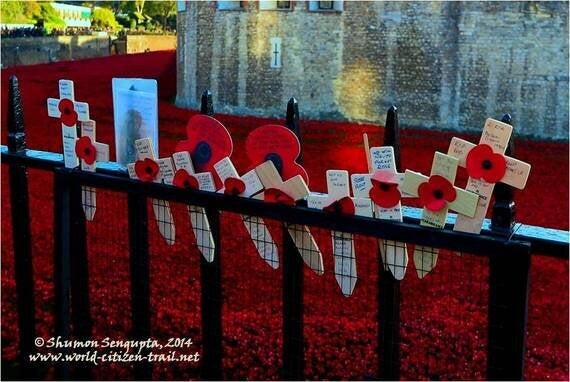
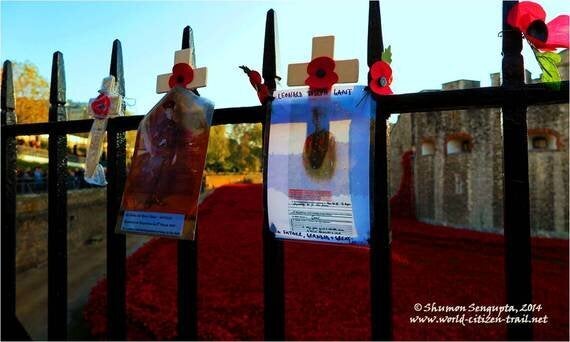
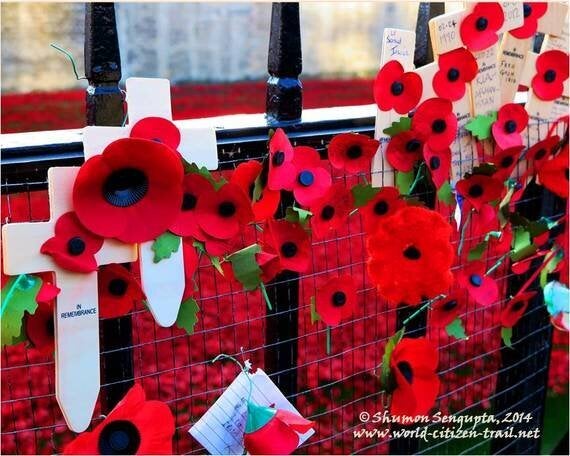
I visited the tower and the installation three times. The first time it was in late August, then on the night on 9th of November and then early in the morning on the 10th of November. Simply put, I was completely blown over by this monumental work on all three occasions, as I saw it expand and evolve.
I was overwhelmed by the scale and sheer impact - psychological as well as aesthetic. The installation was poignant and objectively beautiful.
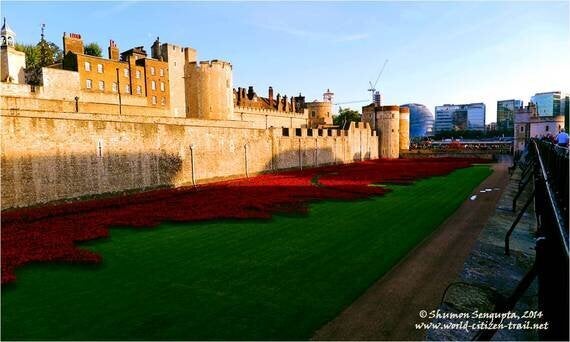
The first poppy was planted on 17 July 2014, and the work was unveiled to the public on 5 August, the centenary of Britain's entry into the war. The ceramic poppies have been arranged to resemble a sea of flowing blood which appears to be pouring out of a bastion window called the "Weeping Window".
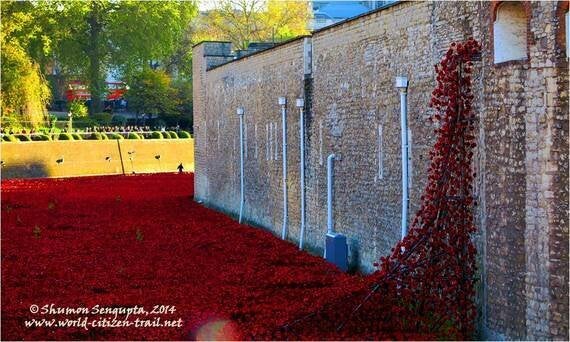
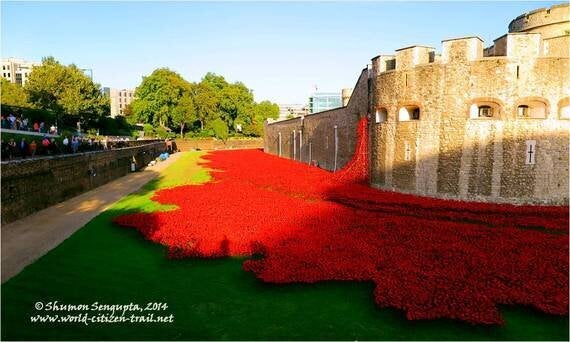
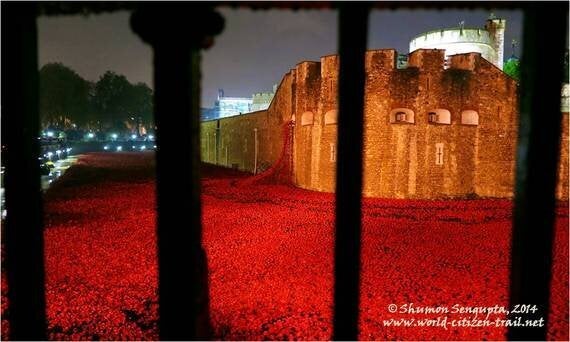
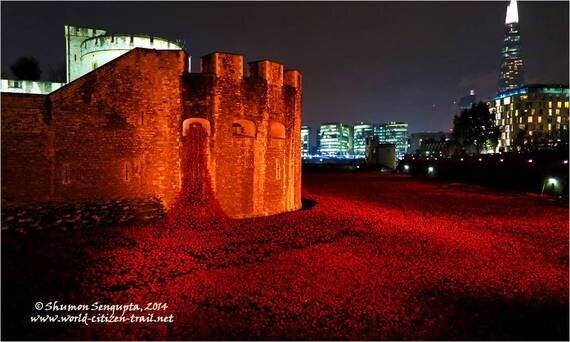
And there is also a 'wave segment' - a surge of Poppies spilling over the wall of the tower near the Tower entrance.
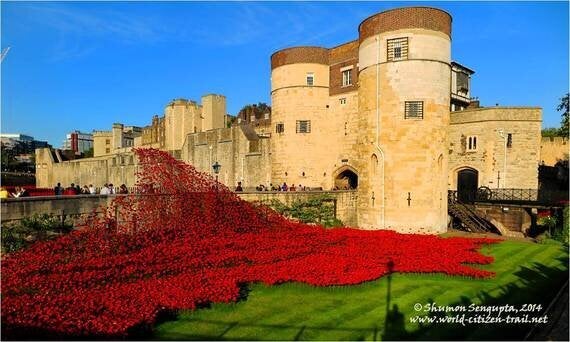
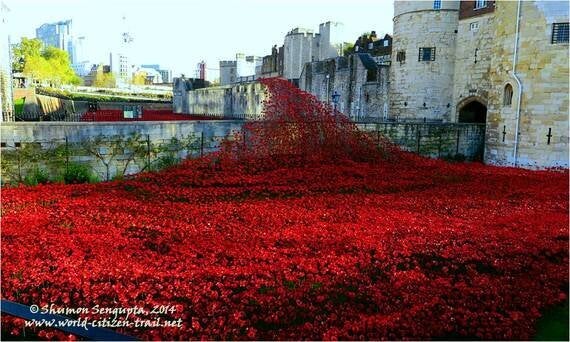
There were 888,246 ceramic poppies, each representing one fallen soldier - to me, as a pacifist, it was a painful reminder of human loss of monumental proportions.
Every soldier, irrespective of rank, status, nationality, class, ethnicity and faith, was represented by one blood red poppy. Death in the battlefield alas had been the ultimate leveler, I thought.
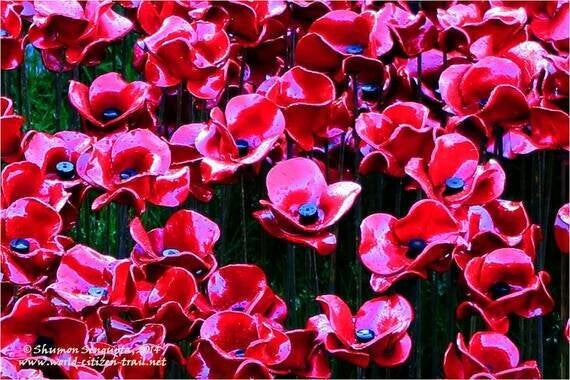
Between 1 September and 10 November, each day around sunset, the names of one hundred World War - 1 service personnel, nominated by members of the public were read aloud by a Yeoman Warder, followed by the Last Post bugle call.

To me, this work also brought home the message that amidst the profound mystery of death lies hidden the equally profound miracle of new life. From the cries of destruction rings forth the music of renewal. Amidst great tragedy lie the seeds of beauty, from conflict and grief arises reconciliation. There is always a new beginning, there is hope; such is the infinite grace of Mother Nature.
Now, about the criticism of this work.
The Red Poppy does not mean the same thing to everyone, as Ted Harris (writer and artist, author of Remembrance Today: Poppies, Grief and Heroism), has pointed out. To many, it is a symbol of respect and gratitude for those who have sacrificed their lives for their country. It shows support for the armed forces and also may be a statement of patriotism. At the same time, to many others, it is grim and shameful reminder that humankind still has to resort to warfare to settle their differences.
In 2011, Ben Griffin, a former soldier set up 'Veterans for Peace' an organization for veterans campaigning against war. This organization led an alternative Remembrance Service on Sunday 9 November 2014, in which veterans wearing white poppies, as against the red ones, conveyed the message that war was not glorious. The adoption of white poppies by this organization implied that red poppies implicitly glorified war.
And then Art Critic, Jonathan Johns of The Guardian critiqued Cumming's installation as "toothless" art. He also noted that the installation was very specific about who it mourns - out of the millions who died, this installation was exclusive to the soldiers from the commonwealth, leaving the rest out.
Johns has reminded us in his spirited and brutally honest critique "that we need to look harder, and keep looking, at the terrible truths of the war that smashed the modern world off the rails and started a cycle of murderous extremism that ended only in 1945. If it did end..."
Johns adds "...an adequate work of art about the war has to show its horror, not sweep the grisly facts under a red carpet of artificial flowers... deaths and injuries were not beautiful". According to him, "a true work of art about the first world war would need to be as obscene as cancer".
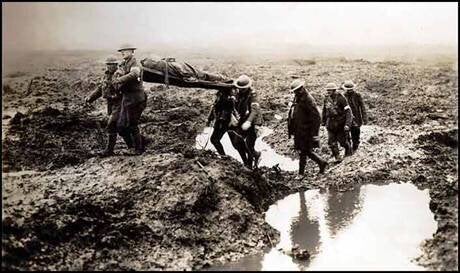
(Canadian stretcher bearers in Flanders fields photographed in 1915, around the time that Canadian John McCrae wrote his world famous war memorial poem In Flanders Fields. Photo courtesy of Rob Ruggenberg / The Heritage of the Great War. Source: http://www.flandersfieldsmusic.com/ww1-photos.html)
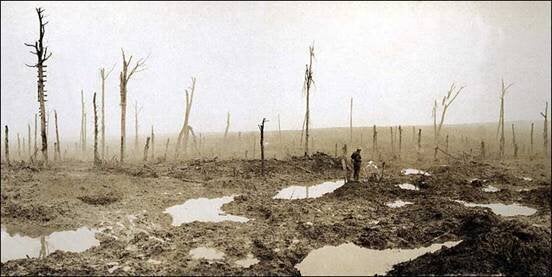
(Officially known as the Third Battle of Ypres, Passchendaele became infamous not only for the scale of casualties, but also for the mud. Photo courtesy of Rob Ruggenberg / The Heritage of the Great War. Source: http://www.flandersfieldsmusic.com/ww1-photos.html)

(Living among the dead... Photo courtesy of Rob Ruggenberg / The Heritage of the Great War. Source: http://www.flandersfieldsmusic.com/ww1-photos.html)
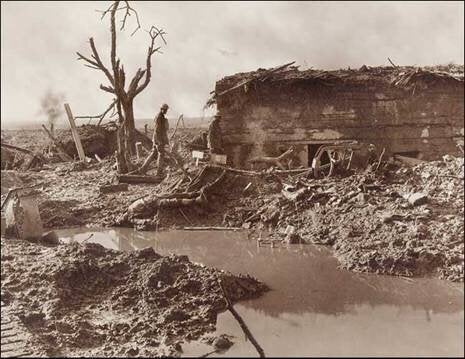
(A Hun Pill-Box amidst surroundings characteristic of the Ypres salient.. Photo courtesy of Rob Ruggenberg / The Heritage of the Great War. Source: http://www.flandersfieldsmusic.com/ww1-photos.html)
As the above photographs amply show, one can understand where Johns is coming from. However, as an aesthete, I do cringe at his insistence that a true work of art about the first world war needs to be "as obscene as cancer" . Contrary to what Johns feels, in my view, we don't necessarily "need to smell the rotting earth and gunpowder, feel the boots falling apart in muddy water, the pounding in the chest as the guns started up" every time we genuinely and deeply grief about loss of lives.
The beauty of the installation at the Tower is not 'spurious', as Johns considers it to be. To me it is honest and genuinely beautiful.
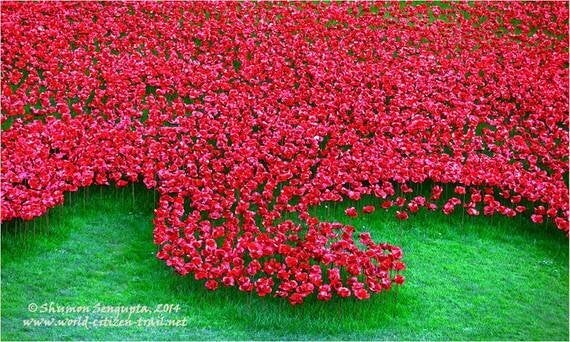
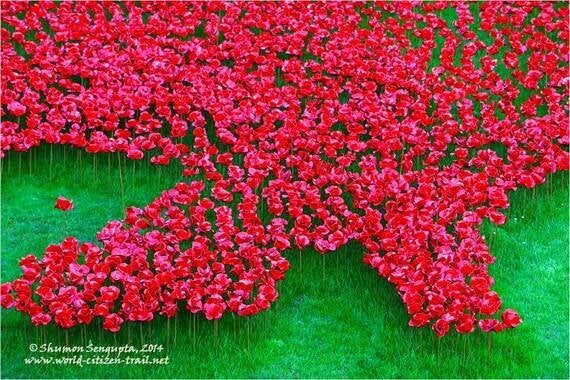
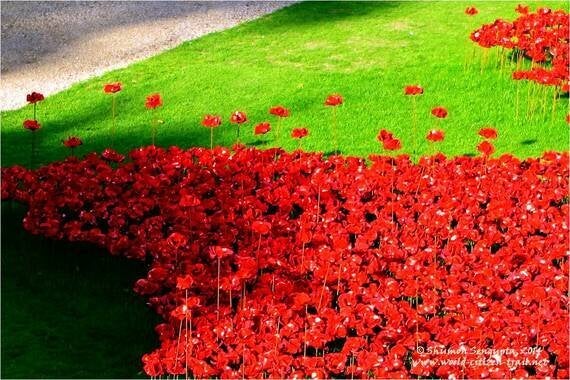
But then the question remains - something that I personally feel so conflicted about. As Ted Harrison, asks: How do we honour the memory of those who died trying to protect us, while we denounce war at the same time?
To me, the final tribute to the glorious dead would be only after the guns have been silenced, after we have ended all wars, after we have achieved lasting peace.
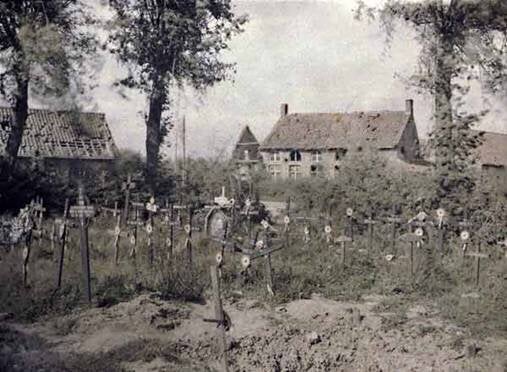
(A War Cemetery in the Belgian village of Woesten; the village is just behind the frontline, not far from Ypres in Flanders. Photographed in 1917. Photo courtesy of Rob Ruggenberg / The Heritage of the Great War. Source: http://www.flandersfieldsmusic.com/ww1-photos.html)
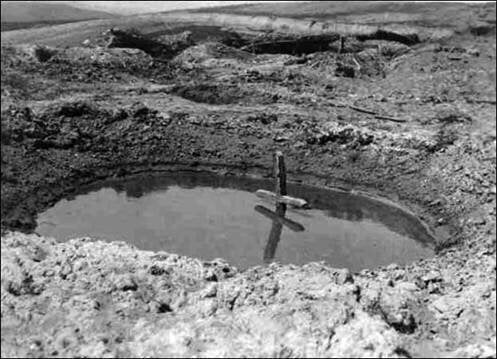
(Cross in a flooded shell hole; German amateur picture. Photo courtesy of Rob Ruggenberg / The Heritage of the Great War. Source: http://www.flandersfieldsmusic.com/ww1-photos.html)
Having loved the installation and disagreed with Jonathan Johns, I shall nevertheless let this learned critic have the last word. He is right to caution us - "let not great beauty muffle terrible facts, the historical reality, our historical understanding of the Great War, its causes and consequence".
